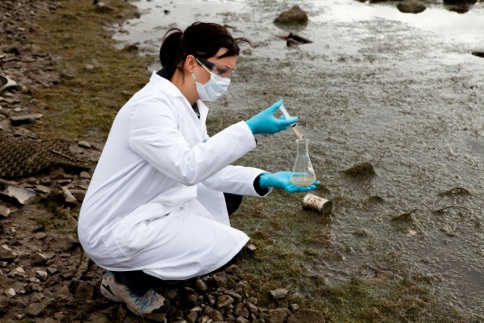The US Environmental Protection Agency (EPA) has proposed reporting requirements on companies manufacturing and importing nanoscale chemicals to gather vital information on the volumes produced, exposure levels, and any environmental health and safety risks. Meanwhile, in Australia, plans to regulate nano forms of existing chemicals seem to have been abandoned.
This proposed data gathering exercise is an acknowledgement by the US Government that regulators don’t know enough about which nanomaterials are being used, their health and safety risks and levels of public exposure.
Unfortunately, we are not seeing the same concern from Australian regulators. Our Australian chemical regulator NICNAS (1) first proposed regulation for nano-forms of existing chemicals in 2009 but this process has gone nowhere – leaving Australians in the dark and exposed to unknown risks.
The US EPA also announced last month that it would regulate nano-silver in consumer products as a result of a lawsuit filed by Center for Food Safety (CFS) in December last year. In Australia nano-silver products remain unregulated.
There is a growing body of scientific evidence showing that nanomaterials behave differently to bulk particles of the same chemicals and may have adverse impacts on human health and the environment. This is why in 2004 the UK Royal Society recommended a moratorium on the environmental release of nanomaterials until their safety could be assessed. This hasn’t happened.
A nanomaterial register is needed in Australia so regulators can gather the basic information necessary to assess the risks associated with the nanomaterials being used in a rapidly growing number of consumer products. However, despite a number of European countries adopting nano-registers, a Government commissioned study here argued that the cost to business of implementing a similar system here was too high. This business first approach to nanomaterials means that consumers, workers and the environment are being exposed to unnecessary risks.
For example, carbon nanotubes are used in a range of applications including sports equipment, electrical equipment, solar cells, water filters and textiles. They have asbestos like qualities and have been categorised as a hazardous chemical by Safe Work Australia.
Research suggests that control and risk management methodologies which are already known can provide levels of protection for workers from exposure to engineered nanomaterials in the occupational environment. However workplaces need to be aware that they are handling nanomaterials to put in place appropriate protective measures. Following the introduction of the French nanoregister, it was observed that many more workplaces became aware they were handling nanomaterials.
Friends of the Earth is calling for:
- A nano-register to allow the tracking of nanomaterials through the supply chain and risk assessments to be conducted;
- A moratorium on the commercial release of products containing nanomaterials until testing has determined that they are safe;
- The labelling of all products containing nanomaterials to allow consumer choice.
(1) National Industrial Chemicals Notification and Assessment Scheme


